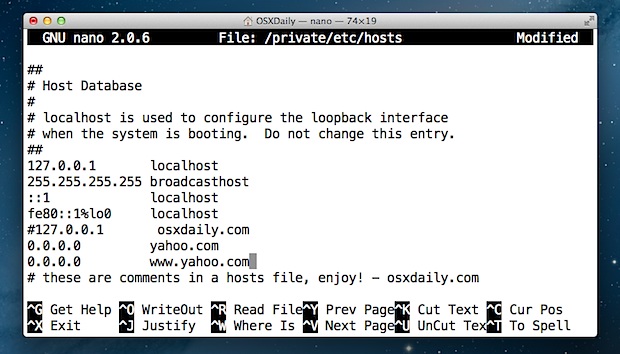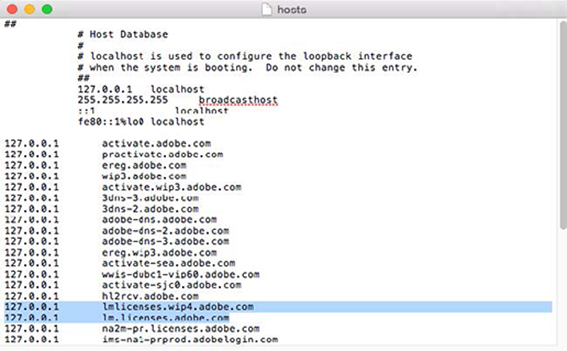

- #Osx block adobe hosts file how to#
- #Osx block adobe hosts file password#
- #Osx block adobe hosts file download#
- #Osx block adobe hosts file windows#
This can be done by clicking the Start icon and searching for notepad.
#Osx block adobe hosts file windows#
To modify your hosts file in Windows 7, you'll need to open the hosts file up in Notepad with administrative permissions.
#Osx block adobe hosts file how to#
This article will cover how to locate and edit your hosts file on Windows (7, 10), Linux, and Mac OSX. At this point, you may be wondering what a host file is? A hosts file is a plain text file that is used to link hostnames to IP addresses. To keep the hosts file up to date, periodically repeat the steps in this guide.You may find that you're asked to or need to edit your hosts file in some instances. For the changes to have effect, you need to either restart your network services or restart your computer.įrom now on, your operating system will block any request to ad-servers and trackers contained in your hosts file.
#Osx block adobe hosts file password#
Write your password in the prompt (it will not show up as you type, and that's expected) and click Enter again. In the same terminal window, type the following command:Ĭlick Enter and you will be prompted to enter your password. Please note that if you have already modified you hosts file with custom entries in the past, you need to manually merge both files (open both files on your text editor and copy-paste the appropriate contents). If the hosts file is OK, you can move it to the correct location with the command below. Repeat the second command to ensure that this file has not be tempered with. Once you have the URL for the this new list (for example the blu list URL is ), replace the StevenBlack URL in the command above with this new URL. Delete it and choose another hosts file, for example from this list. If there's any output (e.g: the command returns text), the file might have been tampered with. In the same terminal window, type the following command:īash grep -E '^(\s*)\s*.*\.*' hostsĪnd then press Enter. pointing to a phishing address that steals your credit card information). Although unlikely, it's important to inspect the contents of the file, to ensure it does not contain malicious entries (e.g.
#Osx block adobe hosts file download#
This command will download the Steven Black list to your current directory.

Then, type the following command into the prompt:Īnd press Enter. Start by opening a Finder window and then navigate to the Applications > Utilities folder and open the Terminal application. In this guide, we suggest you use the unified hosts list from Steven Black to block ads and trackers as it is updated frequently. ads, trackers, fake news, social media, etc.). The lists of ad-server and tracker hosts are provided and maintained by the online community, and you can pick several lists to block different types of services (e.g.

To setup DNS-level ad-blocking, we will add a list of known ad-servers and trackers to the hosts file and point them to an empty address ( 0.0.0.0), thus ensuring the requests are blocked. If the host-name is not present in the file, the operating system asks an external DNS server to resolve it. Typically, your operating system first checks your system's hosts file for an address to the host-name. As such, and because IP addresses can change frequently, when your computer wants to access a server by its host-name, it asks a DNS server what the IP address for that host-name is, so that it can route the request. Since IP addresses are hard to remember, we usually address hosts by their host-name (e.g.

On the Internet, requests to access websites are routed to IP addresses.


 0 kommentar(er)
0 kommentar(er)
